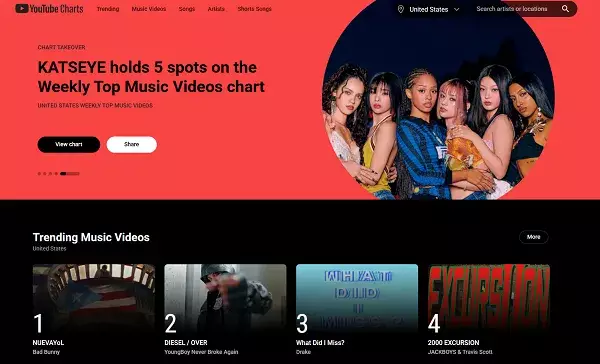In an era where digital consumption paradigms are constantly evolving, YouTube is strategically repositioning its content discovery framework. The platform’s recent decision to phase out the traditional “Trending” and “Trending Now” sections marks a significant departure from its earlier approach centered on broad viral phenomena. Instead, it leans towards a more nuanced, category-specific exploration model, reflecting a deeper understanding of emerging viewer behaviors. This move isn’t just about reorganizing layout; it’s about reshaping how audiences engage with video content on a platform that serves as the heartbeat of online video consumption.
This transformation suggests that YouTube recognizes that the simplistic, monolithic “trending” list no longer captures the dynamism and diversity of modern viewer interests. What was once a straightforward indication of what “everyone” is watching has been overshadowed by micro-trends across countless niche communities. Whether it’s gaming, music, cooking, or fashion, millions find their entertainment in microcosms of content tailored to their specific passions. As a result, broad trending lists become less effective in surfacing relevant videos, leading YouTube to revisit its discovery algorithms and interfaces.
From Single List to Specialized Charts: The New Approach
YouTube’s replacement strategy involves the deployment of dedicated charts for different genres or content verticals. This categorization enables users to delve into detailed, curated lists that better mirror their individual interests. Popular playlists like Top Music Videos, Weekly Podcast Rankings, and Movie Trailer Leaders are just the beginning. Over time, the platform intends to expand this feature set, embracing the diversity of content and fostering a more personalized discovery experience.
This approach aligns with the broader evolution of social media ecosystems, where specialization and niche engagement surpass the broad-stroke viral trend. By zeroing in on specific categories, YouTube is shifting from a global “what’s hot” lens to a more granular, community-centric perspective. That shift not only maximizes relevance but also incentivizes creators to tailor content toward emerging micro-trends within these categories, knowing their videos could feature prominently where audiences are most engaged.
Implications for Content Creators and Viewers
For content creators, this change could herald a new era of targeted visibility. Instead of relying on a fleeting viral spike driven by the broad trending list, creators now have the potential to dominate niche charts that better target their audience segments. These specialized charts could nurture long-term engagement within dedicated communities, fostering loyalty that’s more sustainable than transient viral hits.
On the viewer side, the implications are nuanced. While the disappearance of the prominent Trending banner may initially seem like a loss of discoverability, YouTube emphasizes that algorithmic recommendations will continue to serve personalized content based on individual habits. Their recommendation engine, which continuously learns viewer preferences, aims to surface relevant videos more accurately than broad trending lists ever could. This signals a shift towards a more intuitive discovery system—less reliant on one-size-fits-all lists and more on tailored content flows.
Moreover, YouTube’s decision to keep the Gaming Explore page as the exception suggests an understanding that certain communities thrive on real-time trends. Gaming communities, often fueled by live streams and rapid updates, require a dedicated trending space to catalyze engagement. This nuanced approach indicates that YouTube is balancing the need for targeted discovery with the unique dynamics of specific content genres.
Critique and Future Outlook
This strategic pivot raises questions about the balance between discovery and distraction. Removing the traditional trending sections might encourage users to explore content more aligned with their interests, but it also risks reducing the serendipitous discovery that broad trending lists often foster. These trend summaries serve as an entry point for casual viewers to stumble upon unexpected genres or creators, broadening their horizons.
Furthermore, the reliance on algorithms for personalized suggestions could entrench echo chambers, where viewers are repeatedly exposed to similar content clones, limiting diversity in content exposure. While targeted charts and recommendations optimize engagement, they may inadvertently diminish the platform’s role as a space for serendipitous exploration.
In the long term, the success of YouTube’s new discovery approach will hinge on its ability to strike a balance—leveraging the power of niche-focused charts and personalized algorithms while maintaining mechanisms for users to discover the unexpected. As audience behaviors continue to mature, platforms that adapt swiftly and thoughtfully could emerge as the true innovators in digital content engagement. Whether YouTube’s bold reorganization becomes a transformative success or a missed opportunity will only become clear in the coming months.

